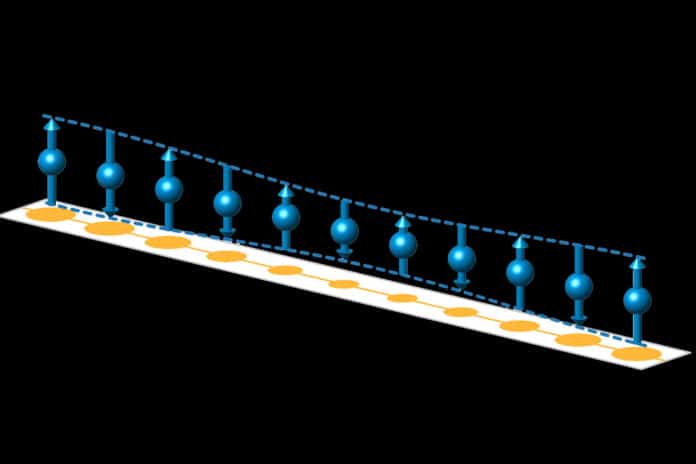Almost six decades ago, physicists were interested to know- what happens if making the electronic ‘energy gap’ between an insulator and a conductor smaller and smaller. Will it change a simple insulator into a simple metal where the electrons can move freely, or does something more interesting happen? Physicists predicted that- under certain conditions, it would result in something more exciting- an antiferromagnetic excitonic insulator, a magnetic state of matter.
Scientists at the U.S. Department of Energy’s Brookhaven National Laboratory have now discovered this magnetic state of matter- an antiferromagnetic excitonic insulator. This is a novel type of magnet that involves solid magnetic attraction between electrons in a layered material. This makes the electrons arrange their magnetic moments, or “spins,” into a regular up-down “antiferromagnetic” pattern.
What makes this material so exotic and interesting?
The electrons on adjacent atoms in an antiferromagnet have their axes of magnetic polarization (spins) aligned in alternating directions: up, down, up, down, and so on. On the scale of the whole material, those alternating internal magnetic orientations counterbalance each other, bringing about no net magnetism of overall material.
This type of material can be switched quickly between different states. They’re resistant to lost information due to interference from external magnetic fields. These properties make antiferromagnetic materials attractive for modern communication technologies.
Excitons emerge when certain circumstances allow electrons to move around and associate emphatically with each other to form bound states. Electrons can likewise form bound states with “holes,” the vacancies left behind when electrons jump to an alternate position or energy level in a material. When electrons interact, strong magnetic attractions prompt the binding. When electron and hole interact, the attraction must be strong enough to overcome the material’s “energy gap,” a characteristic of an insulator.
Brookhaven Lab physicist Mark Dean, a senior author on a paper, said, “An insulator is the opposite of a metal; it’s a material that doesn’t conduct electricity. Electrons in the material generally stay in a low, or “ground,” energy state. The electrons are all jammed in place, like people in a filled amphitheater; they can’t move around.”
“To get the electrons to move, you have to give them a boost in energy that’s big enough to overcome a characteristic gap between the ground state and a higher energy level.”
“In very special circumstances, the energy gain from magnetic electron-hole interactions can outweigh the energy cost of electrons jumping across the energy gap.”
In this study, scientists used state-of-art techniques to explore those special circumstances. Their aim was to determine the emergence of the antiferromagnetic excitonic insulator state.
They studied and identified a material called strontium iridium oxide. Later, by using x-rays at the Advanced Photon Source. They measured the magnetic interactions and associated energy cost of moving electrons.
The team started their investigation at a high temperature and gradually cooled the material. With cooling, the energy gap steadily narrowed. Electrons started jumping between the magnetic layers of the material at 285 Kelvin (about 53 degrees Fahrenheit. They immediately formed bound pairs with the holes they’d left behind. At the same time, they trigger the antiferromagnetic alignment of adjacent electron spins.
After performing some calculations, they developed a model using the concept of the predicted antiferromagnetic excitonic insulator. The model comprehensively explains the experimental results.
Yao Shen (Brookhaven Lab) said, “Using x-rays, we observed that the binding triggered by the attraction between electrons and holes gives back more energy than when the electron jumped over the bandgap. Because this process saves energy, all the electrons want to do this. Then, after all, electrons have accomplished the transition, the material looks different from the high-temperature state in terms of the overall arrangement of electrons and spins. The new configuration involves the electron spins being ordered in an antiferromagnetic pattern while the bound pairs create a ‘locked-in’ insulating state.”
Journal Reference:
- D. G. Mazzone, Y. Shen, H. Suwa, G. Fabbris, J. Yang, S.-S. Zhang, H. Miao, J. Sears, Ke Jia, Y. G. Shi, M. H. Upton, D. M. Casa, X. Liu, Jian Liu, C. D. Batista, M. P. M. Dean. Antiferromagnetic excitonic insulator state in Sr3Ir2O7. Nature Communications, 2022; 13 (1) DOI: 10.1038/s41467-022-28207-w
